According to a report from the WTO Centre in Vietnam, Vietnam’s textile and garment sector will enjoy high priorities after the country signs the Trans-Pacific Strategic Economic Partnership Agreement (TPP).
The centre asserts that Vietnam’s possibility to access large markets, such as the United States and other TPP member countries (especially the partners who have not signed FTA with Vietnam) with zero or low tax rates will bring enormous competitive advantages, especially for its strong products which are levied with relatively high taxes, such as textiles and footwear.
Specifically, at the request of the United States, the negotiations on textiles and garments are conducted separately from the negotiations on opening the door for the remaining commodities. In these negotiations, the two main partners are the United States (which opens the market) and Vietnam (which accesses the market). There are also other partners, such as Mexico and Australia.
As of May 1, 2015, the negotiations on textiles have reached the general rules of origin (i.e., the “yarn forward” rule). Accordingly, to enjoy preferential tariffs under this agreement, the textile and garment products must be produced from yarn in the TPP member countries.
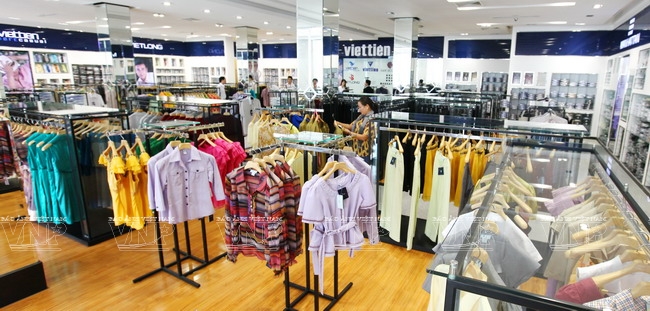
Viet Tien Garment Company has over 20 shops and 300 agents nationwide. Photo: Le Minh/VNP

A stage of making high-grade vests. Photo: Dang Kim Phuong/VNP

A female employee of Viet Tien Garment Company. Photo: Le Minh/VNP
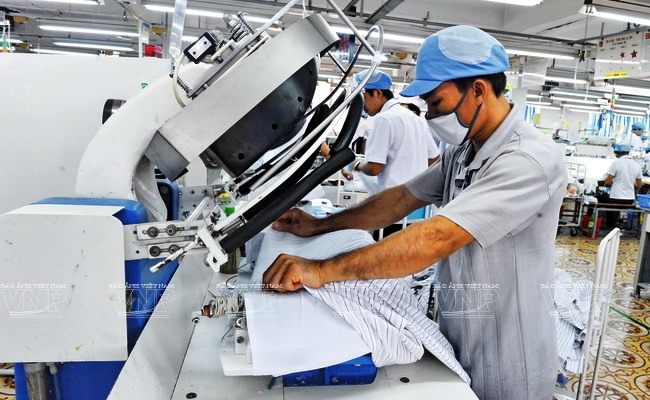
Ironing shirts. Photo: Kim Phuong/VNP |
|
According to a report of the Ministry of Industry and Trade, the export turnover of the textile and garment sector in May, 2015 was estimated at 1.65 billion dollars, an increase of 8.4% over the same period last year. Generally, in the first five months of 2015, the export turnover was estimated at 8.11 billion dollars, an increase of 8.4% over the same period last year. |
According to the report, there are proposals for special safeguard measures applied only to the textile and garment products with a specific mechanism. This is a mechanism to protect the importers (mainly the United States) against the massive imports of textiles to the market after the preferential taxes are applied.
Theoretically, this term causes many disadvantages for the export enterprises of Vietnam – a TPP member country with the largest number of textile imports to the US market. However, in fact, this term is not highly applicable because with the current capacity and the prospect of investment for the development of the textile and garment sector in the future, the amount of textiles exported to TPP countries will unlikely increase sharply.
Moreover, the United States virtually produces no similar items, so its manufacturing sector basically suffers no serious losses.
The list of “supply shortages” includes products that the TPP countries do not have enough to supply, therefore, they can be provided by other sources outside the TPP and enjoy preferential taxes. Moreover, the products on this list must not comply with the “yarn forward” rule.
The WTO Centre says that at present and in the near future, the materials supplied by the countries outside TPP for most categories of products in Vietnam still account for a high proportion while the “yarn forward” is a general rule.
Theoretically, the more materials, especially the materials used in major textile exports are included in the list of “supply shortages” so as not to comply with the “yarn forward” rule, the more advantages are created.
However, the number of materials on this list is limited. Vietnam should have specific explanations for the shortage to persuade other countries to accept.
Vietnam also needs to take into account the case in which the domestic enterprises can produce these materials, not simply processing for foreign countries as they are doing now. Therefore, it is necessary to develop a plan on selecting the materials to put into the list in a reasonable and careful way to take advantage of the preferential taxes from the TPP.
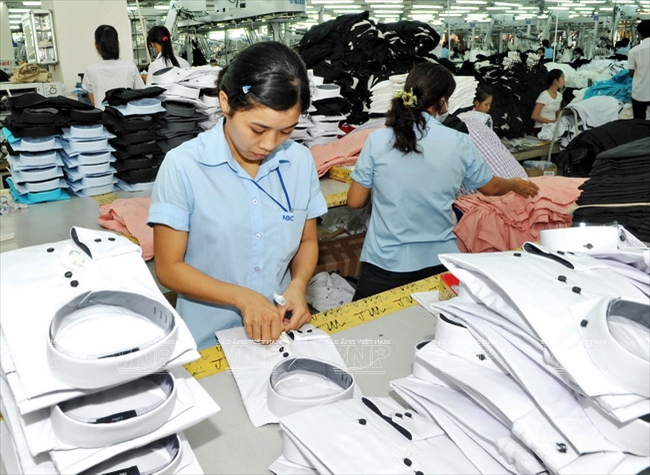
High-grade shirts, a major product of Nha Be Garment Company with high added value,
create a competitive advantage in the foreign market. Photo: Dang Kim Phuong/VNP
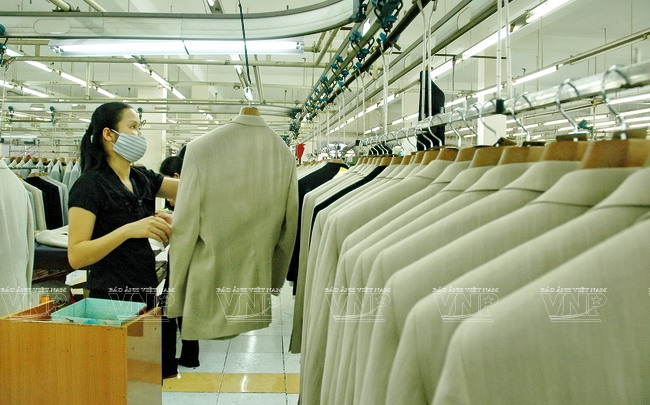
Checking the quality of vest products at Nha Be Garment Company. Photo: Dang Kim Phuong/VNP
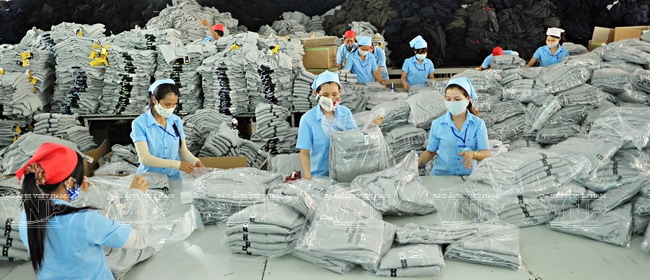
Vietnam’s garment and textile sector leads the country in terms of export turnover in 2013 and is expected to make
a development leap after Vietnam’s entry into the Trans-Pacific Strategic Economic Partnership Agreement (TPP).
Photo: Dang Kim Phuong/VNP |
Now, the negotiations on a market opening roadmap (removing the tax) for the textiles are developed in three groups: A group with the tax removed immediately after the TPP becomes effective; a group with the tax removed in a 5-year roadmap (the tax is steadily reduced five years after the TPP becomes effective) and a sensitive group (the tax is reduced only at the time the TPP becomes effective, then it is kept intact and will be removed after 10 or 15 years).
The WTO Centre also states that, the greater number of the first groups (the tax is removed immediately) Vietnam has, the more benefits for export the enterprises will enjoy.
Source: Chinhphu.vn
Photos: Le Minh & Dang Kim Phuong